Wedding Dress View Into The Past
Glimpses into the past via costume exhibits of wedding dresses through the decades
Viewing dress styles from bygone eras entertains and provides information about the society and customs of the time. I recently attended two wedding dress Costume Museum of Canada exhibits in Winnipeg, Manitoba which did just that. A special one-night exhibition as part of Culture Days Nuit Blanche focused on wedding dresses from the 1940s. A two-week exhibition entitled Weddings: An Invitation to the Past showcased wedding dresses from 1900 to 1910, the 1930s, the 1950s and the 1970s.
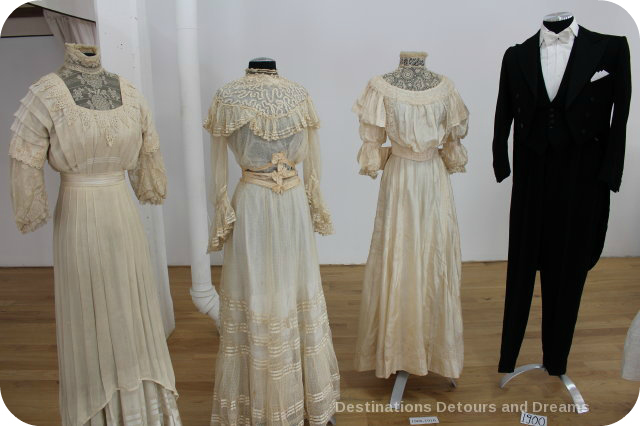
The Victorian era ended with the death of Queen Victoria in January 1901. King Edward VII reigned from 1901 to 1910. Wedding dresses during the Edwardian era were long, elegant and straighter than in the Victorian era. Bustles were abandoned, but corsets were necessary for the narrow waist styles. Gloves were frequently worn. They were a significant courtship present from the groom. Queen Victoria set the trend for white wedding dresses. Many affluent brides made that choice, but a variety of pale colours were also popular. Less affluent brides often just wore their best dress.
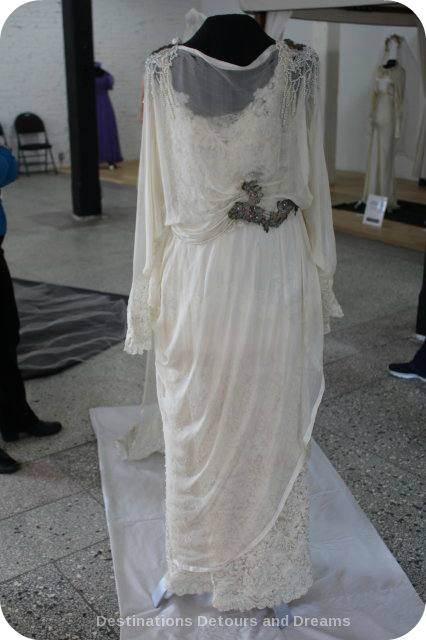
A few special dresses were displayed in the centre of the Weddings: An Invitation to the Past exhibition room, most of which belonged to well-known brides. One such dress was the 1919 wedding dress of Muriel Sprague Richardson. The dress consisted of several lace layers and was decorated with pearls and metallic flowers. Muriel Richardson was a noteworthy Manitoban. Winnipeg’s International airport is named after her husband, James Armstong Richardson. Muriel was active in war and volunteer community work and Honorary Chair of many local and national charities. She received the Manitoba Golden Boy Award in 1961, an award which recognizes Manitobans who had rendered meritorious service to their communities. It was based on nominations from the general public. The awards were renamed the Good Citizenship Awards around 1970.
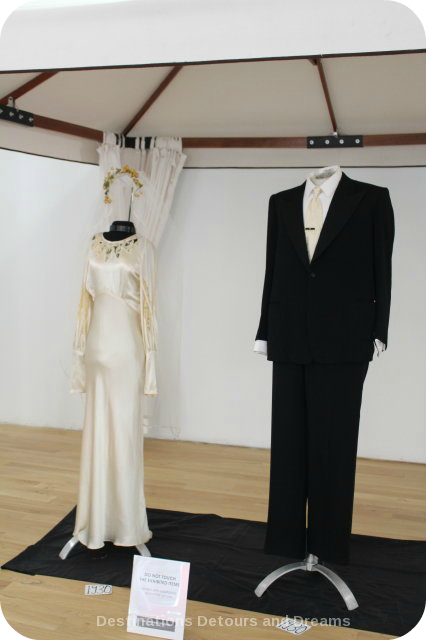
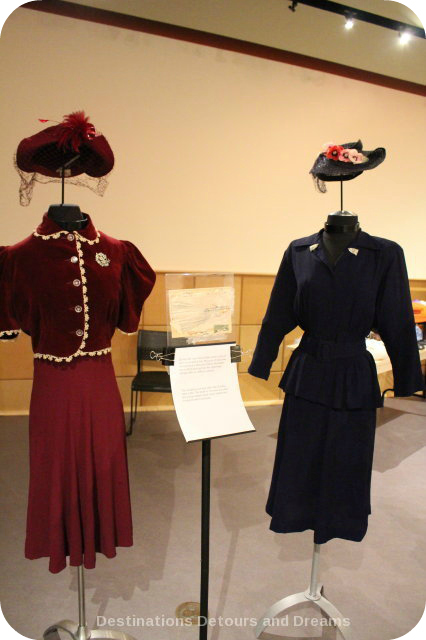
Brides during World War II often opted to wear a suit of solid colour and a hat. The dress could be worn again for special occasions. Brides also wore more traditional wedding dresses. The dresses pictured at the top of this post are from 1943 and 1944. Cream was the most common colour. The amount of fabric which could be used was limited by law. Skirts were short and narrow. Styles were simple with few ruffles or pleats.
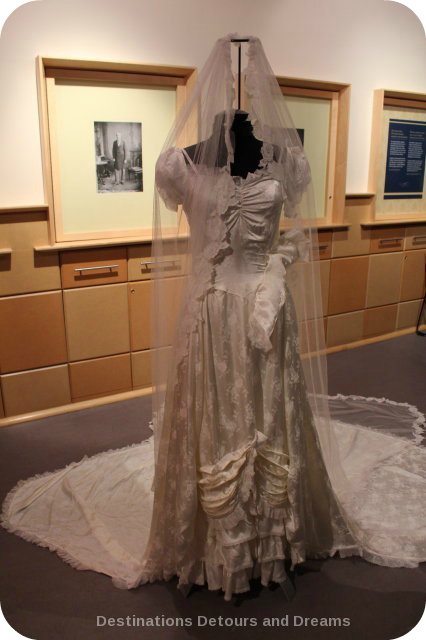
After World War II, the economy changed from a war economy to one of domestic consumption. There was a sense of optimism about the future. Fashions changed. Synthetic fabrics were used. Skirts were longer and fuller. Dress had tiny waists and prominent busts.
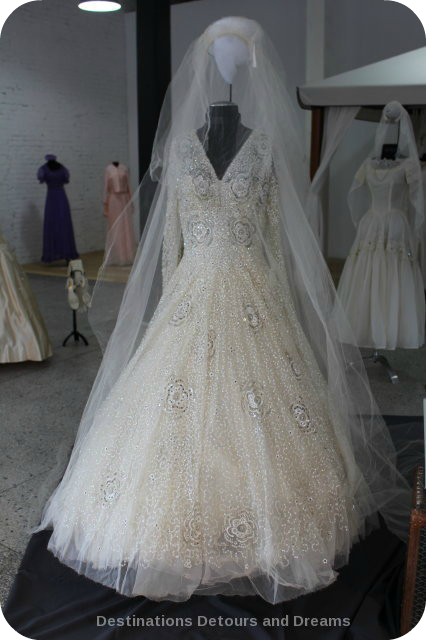
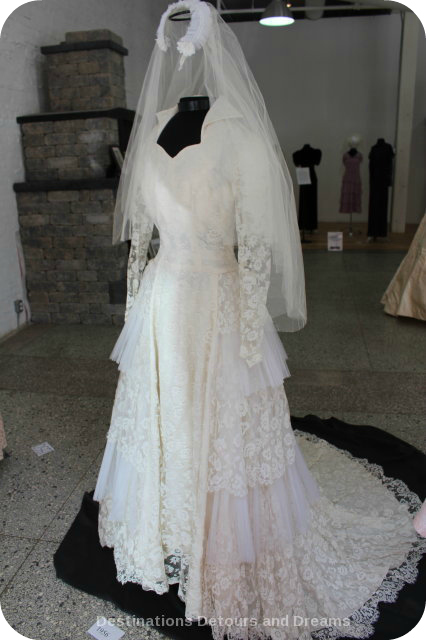
The 1950s were a time of transition. Styles varied. A return to civilian life and relative prosperity included a return to more elaborate and formal church weddings. For the less wealthy, opportunities to rent wedding apparel existed. Glamour and fancy styles were back. Waistlines varied from tightly cinched and gathered to slim and snug.
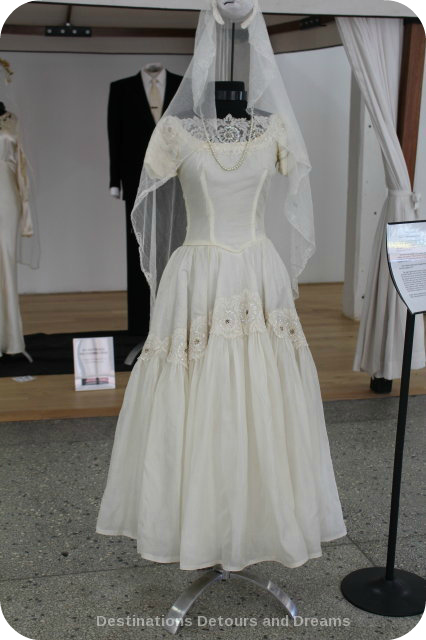
Fashion styles of the 1970s were flamboyant. It was the era of pantsuits and mini-skirts. Those trends made their way into wedding dress styles.
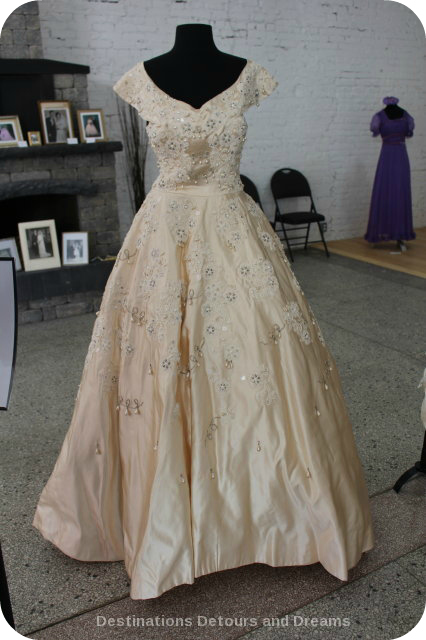
Many of the dresses on display had lovely flowing designs, beautiful lace and intricate bead work. In all decades, it was the wealthy who could afford the most elaborate of dresses.
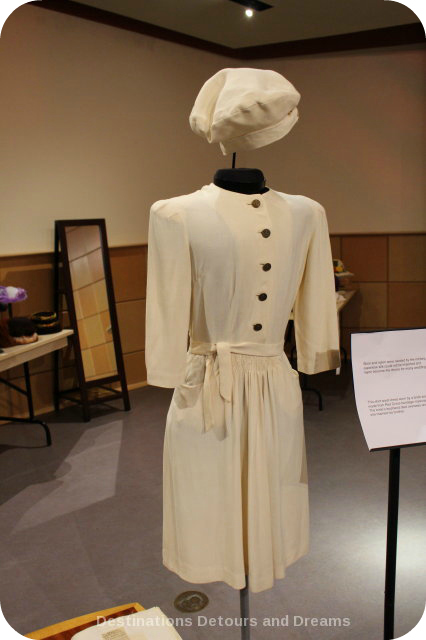
The less wealthy often found creative ways to create their own wedding dresses. A World War II bride, who married the brother of her boyfriend killed in the war, fashioned her shirt waist dress out of Red Cross bandage material. I don’t know if that was a frugal and clever creative act of necessity, a statement about her broken life or a tribute to dead boyfriend.
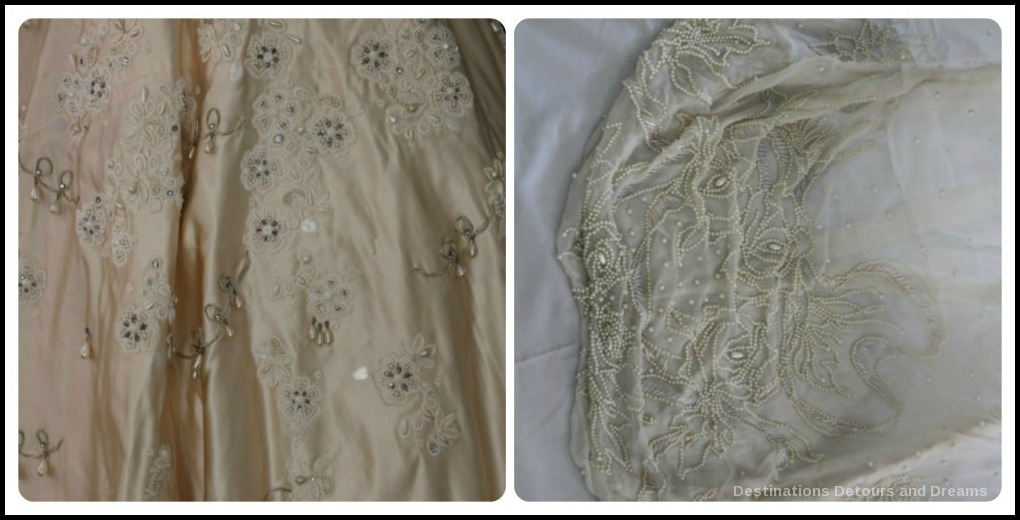
The Costume Museum of Canada is an accredited museum run by volunteers, headquartered in Winnipeg, Manitoba. It has a vast collection in storage but no permanent exhibition space. The museum preserves costumes worn by the people of Canada over the decades and exhibits those costumes through special exhibitions.
Weddings: An Invitation to the Past ran in October 2016. Check the Costume Museum of Canada site for information on future pop-up exhibits.

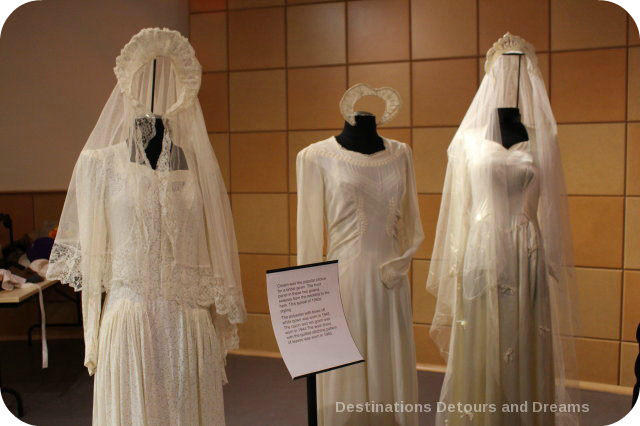
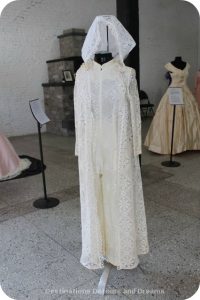
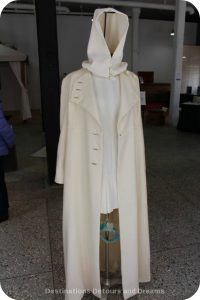
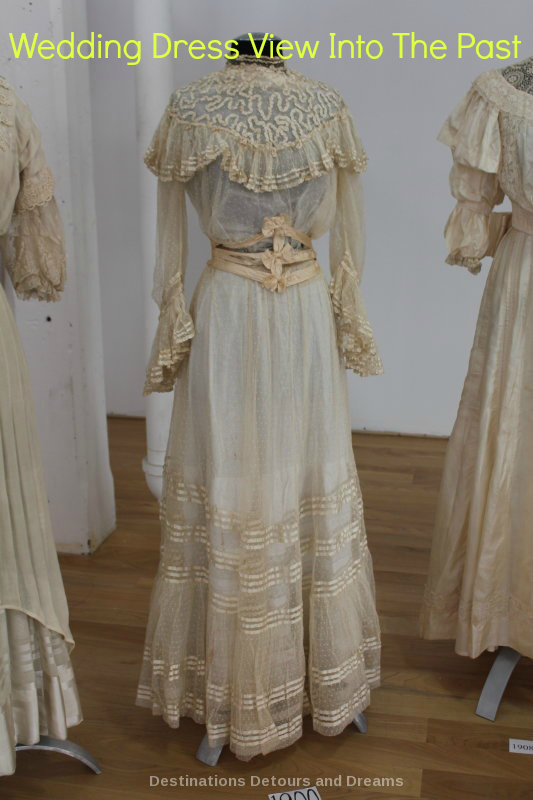
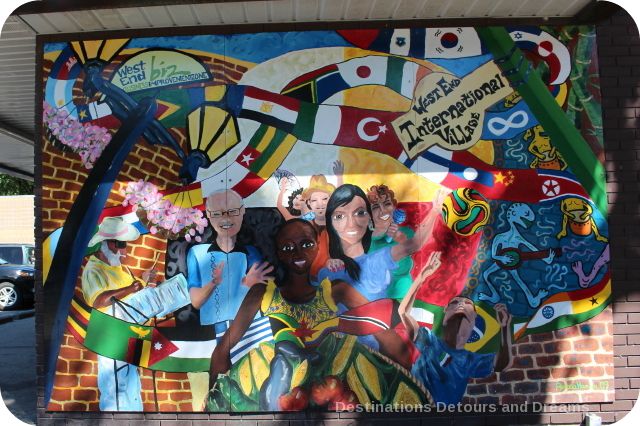
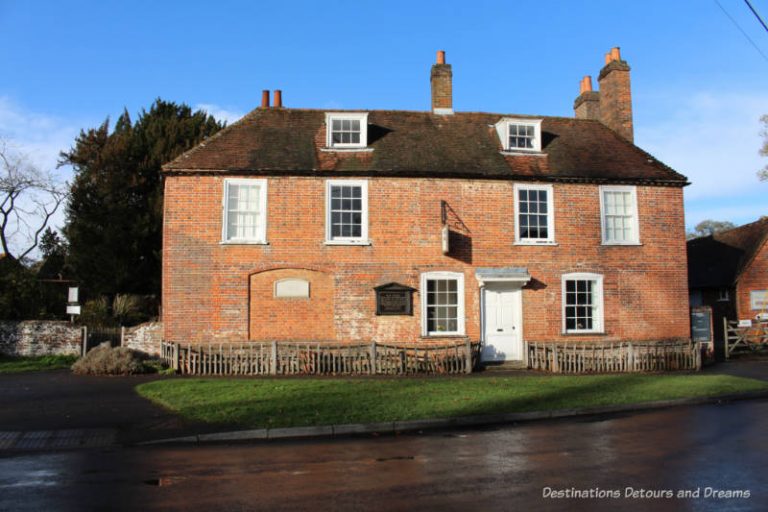
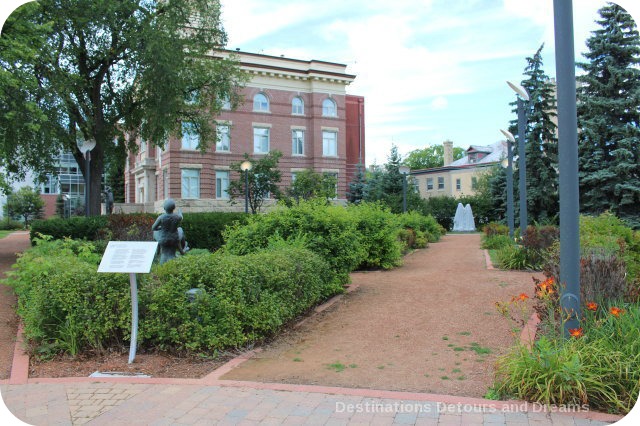
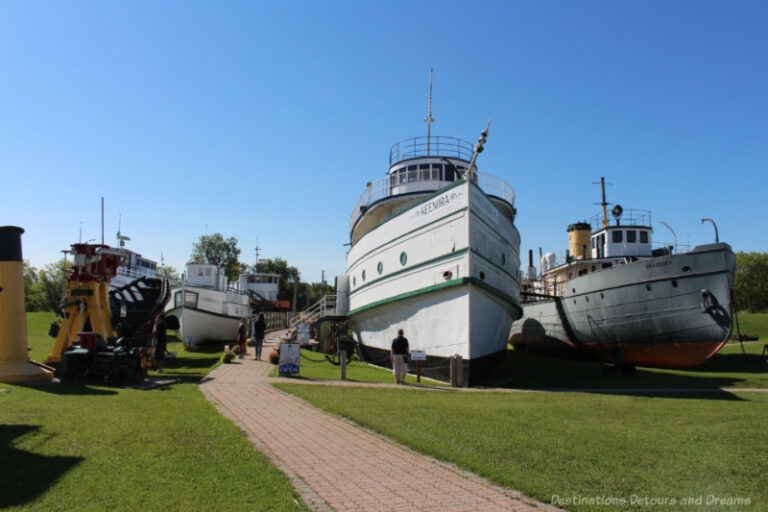
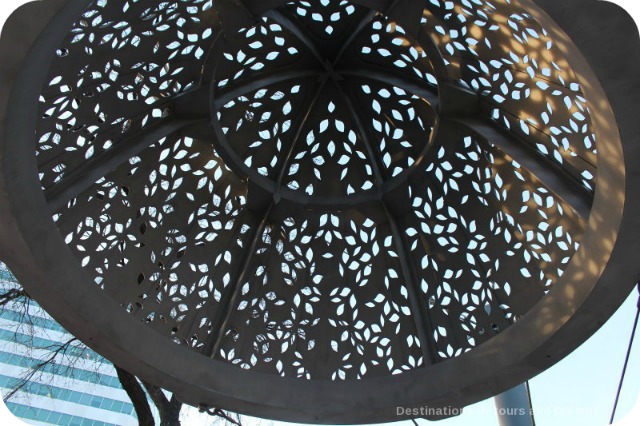
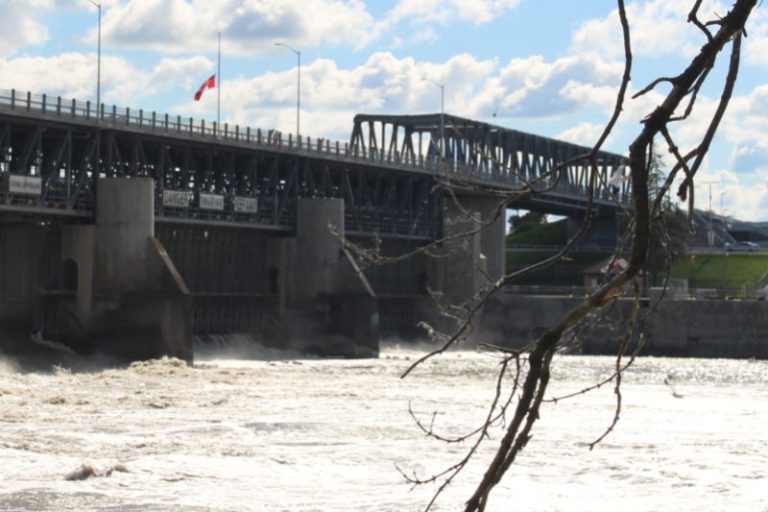
Looks like fun. I’m trying to decide which dress I like best. It’s amazing the changes through the years. 1953 is pretty. Especially interesting to see how practical they were doing WWII.
Susan, I think the 1953 dress was my favourite.
I love the Costume Museum of Canada, Donna. We used to live near it when it was called the Dugald Costume Musem. Thx for sharing this amazing wedding dress collection with the world.
Doreen, I loved the Dugald Costume Museum. It’s too bad the Costume Museum doesn’t have the funding to have a permanent exhibition space.
Wonderful dresses and pictures, Donna. That kind of exhibitions are so nice. Love them.
Thanks Catarina
The dresses worn in 1949 and 1953 are beautiful. I can imagine they assentuated and complemented brides all over the world.
The dresses of the war brides are extremely modest but given the limited lifestyle and lack back then, one would not expect more.
I was wondering if you were going to post dresses from the 80’s. Layers upon layers of ruffles!
Phoenicia, the exhibit didn’t include any dresses from the 80s. I recall a lot of lace as well as ruffles.
Fashion through the years is always fun to take in, especially when it comes to the styles of wedding dresses. I never wanted to wear one though, opting instead to wear a t-shirt and cargo shorts. It was in Vegas, so anything went…
Jeri, a t-shirt and cargo shorts does sound very Vegas. From the perspective of having lived six decades, the wedding dress itself doesn’t seem that important, but it is fun to look at the styles over the years.
This is clearly not an area where I have a great deal of expertise but it seems as thought wedding dresses veered from the norm in the 30’s and 40’s then turned back to the traditional. I like the fact that these exhibits also show some of the dresses worn by brides of modest means.
Ken, one of the things I enjoyed most about the exhibit was seeing how a change in times (war-time, peacetime, prosperity, depression) was reflected in the styles of wedding dresses.
So pretty. I loved these wedding dresses. Thanks for sharing. My grandparents dresses didn’t look anything like these at all. They lived in Europe. The dresses were very simple in style and looked like a plain dress.
Sabrina, I’m glad you enjoyed the post. I suspect there were many people whose dresses were simpler and practical.
Beautiful gowns – like the 1930 and 1953 dresses the best. The 1930’s dress is similar to my mother’s wedding dress. I found it interesting that the wedding dresses during the war weren’t only not white but were actually rather dark in colour. Wonder what the reasoning was for that.
Lenie, I think there was more of a need to be able to reuse a wedding dress for other purposes during the war. There were also restrictions and limitations on the types of material available.
I love the 1953 one, also. The faint bit of color, the Grace Kelly feel to it. What a wonderful exhibit. I also think the suits were a nifty and practical idea.
Rose Mary, my eyes kept going back to the 1953 dress.
Oh I just love things like this Donna! In another lifetime when my entire focus was on drawing and painting I created several series based on clothing from different eras. All of these dresses are lovely, but my favorite is Muriel Richardson’s. Thank you so much for sharing!
Marquita, I’m glad you enjoyed the post. Your drawing series sounds interesting.
My mother got married in December 1969 (so almost the 70s.) She ended up taking her more traditional wedding dress to the tailor where they turned her long wedding dress into mini skirt length. Of course, such a reflection of that time. I love the Shirley Richardson 1949 dress. I will hopefully never have another wedding. But if I did, I could see getting something in that style.
Erica, it’s interesting your mother chose to turn a traditional wedding dress into a mini-skirt instead of opting to buy or have a mini-skirt dress made.
It is amazing how fashion can really reflect the realities of the time. I didn’t know that brides during WWII liked to wear colour. I am sure they got a lot more use out of their wedding dress than the traditional ones!
Emily, it is interesting to see how fashion reflects the times.
Amazing pictures! I liked the Muriel Richardson 1919 wedding dress. Thanks for sharing loved the read!
Glad you enjoyed the read Sushmita.
Seeing the styles of wedding gowns throughout time is very interesting. I will admit, for some reason, seeing a wedding dress on a mannequin, always looks creepy to me.
Thanks for sharing this informative info on wedding dress.
William, it is a little funny that you, who researches medieval monsters and creates some pretty scary ones for your writing, finds the mannequins creepy, but I can somewhat understand it.
What a stunning selection of wedding dresses…it is a pity that they have no permanent place to display their collection. It would be amazing to see it all on display
Michele, it would be nice if they had a permanent display. They have a lot of costumes beyond the wedding dresses.
I married in 1976 and loved my quite simple long ivory wedding dress. I wore a hat and I don’t think in retrospect I would choose that style again. I feel the strapless wedding dress has become a real cliche. They all look alike in my view and unless the bride has beautiful arms and a great body they aren’t very attractive. Just my opinion. Loved your photos.
Jeannette, I’m sure there are many who wouldn’t choose the same style wedding attire again. Styles and even tastes change.